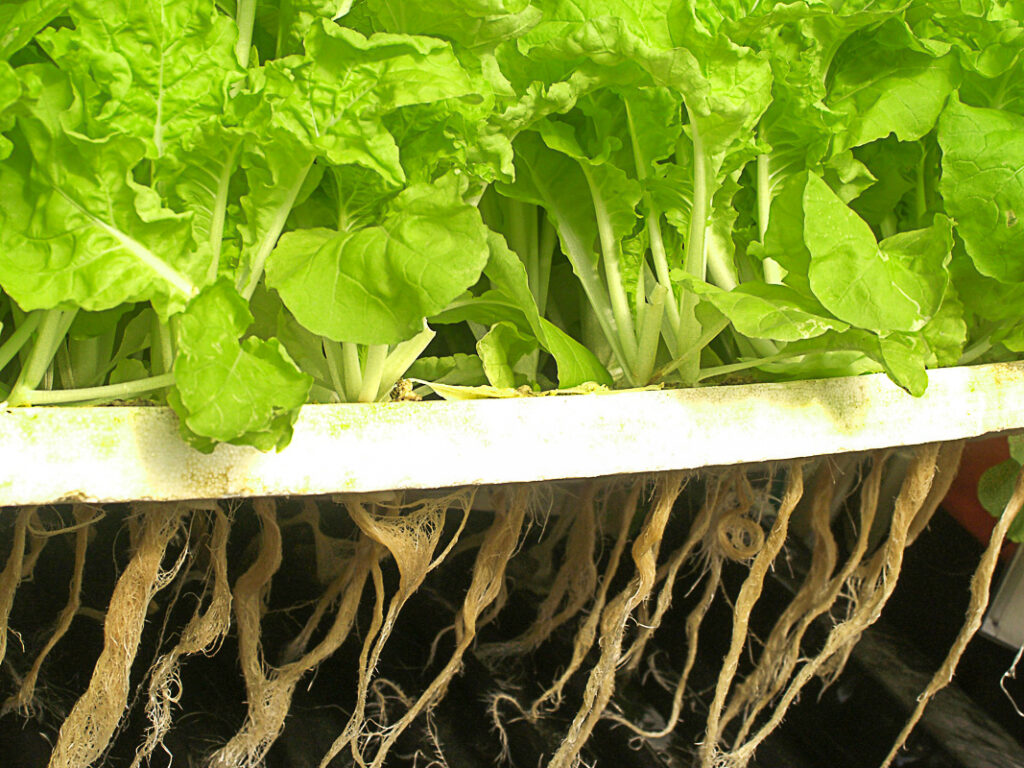Growing plants hydroponically requires pots and planters specifically designed for this unique way of growing. Ensuring you have the right hydroponic pots and planters is important in producing a bountiful harvest, regardless of what you are growing.
*This post contains compensated links. Find more info in my DISCLAIMER. As an Amazon Associate, I earn from qualifying purchases.
Want to start a hydroponic garden at home easily? Check out our recommendations for Best Hydroponics Starter Kits for Beginners.
Types Of Hydroponic Pots And Planters
Several types of hydroponic containers are available to be used for hydroponic growing. Each presents its own advantages and disadvantages for the different types of hydroponic growing systems. It’s important to find hydroponic containers that provide room for drainage, aeration, and air pruning.

Terraplanter
Terraplanter is a hydroponic planter that allows you to grow plants indoors without using any soil. This container is porous and is made of ceramics.
The planter serves as a water bank allowing water to diffuse through. Room for plants to grow is created on the outer surface of the container. Plant roots are above ground and cling in a water container to access air and water.
Net Pots
These hydroponic net pots work best in hydroponic systems for nutrient film, deep water culture, ebb and flow systems, and aeroponics systems.
Net pots offer support to cuttings and seedlings during propagation. The pots provide good aeration and drainage thanks to their open design.
Holes in the net pots provide room for roots to reach the nutrient solution. Net pots are generally made of plastic allowing for repeated use. In terms of the best grow media for net pots, look for either perlite, rock wool, or clay pebbles.
Fabric Pots
As the name suggests, these hydroponic grow pots are made of woven fabric. Most fabric pots are made using polypropylene.
This man-made material is breathable and allows for sufficient water drainage. The material also allows for good aeration of plant roots. This aeration helps roots grow towards the wall of the pots, exposing them to additional air.
Fabric pots are non-rigid and can fit into unconventional spaces. Their non-rigid design works well on uneven surfaces like rocks and wood chips.
Larger pots come equipped with handles making moving plants easier. Fabric pots work well in all climates, keeping plants cool when it’s hot and vice versa. For the grow media, look to use clay pebbles, coco coir, or rock wool.
Plastic Pots
Plastic pots have set the standard in home gardening for years. They still prove to be highly efficient and relatively inexpensive.
Plastic pots feature strong and sturdy sides with drainage holes at the bottom for excess water. These “traditional pots” can easily be stacked and are difficult to tip over even in strong winds.
Because of their durability, plastic pots are efficient for hydroponic growing. With some modifications, these pots can be used in a variety of different hydroponic growing systems.
Pro Tip: It’s important to remember to choose pots that are bigger than your plant needs. Plastic pots work well with a number of different grow media including clay pebbles, coco coir, and grow stones.
Air Pots
Air pots are relatively new in the hydroponic growing world. They are light and hollow providing unparalleled aeration. They also have concentric cone rings that point both inwards and outwards.
The cones facing inwards usually disrupt roots that are close to the walls of the pots hence they avert root circles. The outward cones provide sufficient aeration.
The bottoms of air pots are offset from the base to enhance aeration while protecting roots from hot or cold surfaces. Air pots can be used in a variety of hydroponic systems. Rock wool, clay pebbles, or coco coir are the preferred choice of grow media for air pots.
Plastic Grow Bags
If you are growing indoors, plastic grow bags are an ideal choice. Widely used in greenhouses and grow houses, plastic grow bags offer several advantages.
The bags are fitted with drainage holes at the bottom to prevent over-watering. Their plastic design is highly durable and can be reused after each growing season.
An alternative to plastic pots, they work well on uneven surfaces and in unique spaces. Built-in handles allow for easy relocation of plants. Plastic grow bags work well with different types of bedding plants. In terms of grow media, coco coir is the preferred choice.
Saucers
Saucers act as a hydroponic grow tray. They collect excess water from plants preventing over-watering. Planting pots are usually placed inside saucers.
These saucers are available in different sizes and colors to fit any pot size. Saucers can be used both indoors and outdoors. When used indoors, your grow area and carpeted floors are protected from water spillage.
Featuring a sturdy base that prevents tipping have interior ribbed surfaces to prevent pots from sticking to them and plants are kept raised from excess water.
Buckets And Lids
Buckets and lids are ideal for containing and transporting solids and liquids. They perfectly work in hydroponic systems.
Gardeners can make a watertight seal by fastening the lids onto the buckets. This keeps the plants inside free from contaminants.
Indoor Versus Outdoor Hydroponic Pots And Planters
Buckets and fabric pots are the most ideal when growing outdoors because they allow root air-pruning and reduce the chances of root lock.
Saucers can be used both indoors and outdoors. They protect your grow beds from water spillage. Plastic pots and plastic grow bags are often referred to as traditional pots and they work well when used outdoors. Net pots and air pots are preferably used indoors specifically in greenhouses.
Tips For Using Hydroponic Pots And Planters At Home
Hydro planters and pots can be made of several holes at the bottom or they can be made of mesh. Beginner gardeners are advised to use plastic pots because they are easy to use.
However, if you are an enthusiast, you will try out two, three, or all the containers to see which one works best for you.
Close to all vegetable and herb varieties can be grown in hydroponic pots and planters. However, the size of the container matters. Large and bushy varieties require large plants.
Eggplant, peppers, lettuce, beans, green onions, tomatoes, squash, and radishes can perfectly grow in hydro pots and planters.
Cucumbers and pole beans can also be grown in containers but they need considerably more space because of their vining growth habit. Herbs like cilantro, chives, basil, dill, oregano, parsley, mint, watercress, thyme, and rosemary do well in hydroponic containers too.
How To Maintain Hydroponic Pots And Planters
Maintaining your hydroponic grow beds and planters is an important part of the growing process. The better you maintain all your equipment the longer you’ll be able to use them. Not only does this save money, but eliminates the need to replace them every year.
After you are finished growing, properly clean and sterilize all of the pots, planters, and beds. Empty them, wash them with simple soap and water, and then let them fully dry.
Where To Buy Hydroponic Pots And Planters
Amazon offers a very wide range of hydroponic pots and planters at affordable prices. They’ve got you covered, should you need a growing container. You will not be surprised to find other pots and planters that are new in the market.
FAQs – Hydroponic Pots And Planters
Pot size is going to vary by the type of plant you are growing. Plants such as lettuce require a pot that’s only a couple of inches in diameter. Tomatoes, peppers, and cucumber on average require a “larger” pot of 3 to 4 inches.
The container needs to be deep enough to allow the plant roots maximum exposure to the nutrient-rich water solution.
